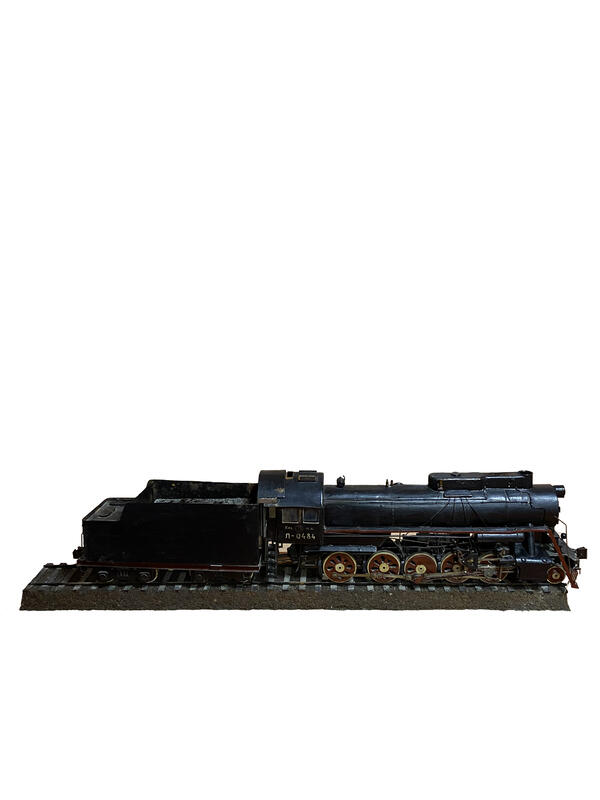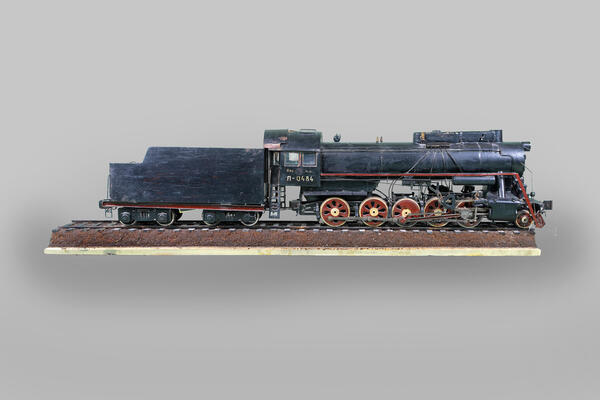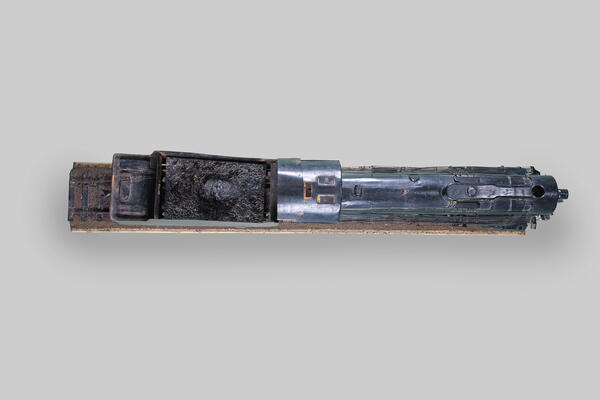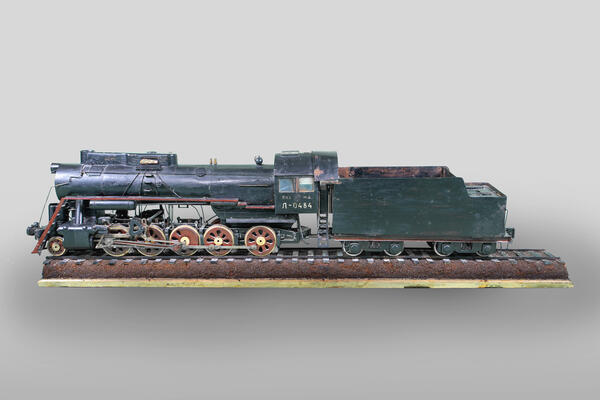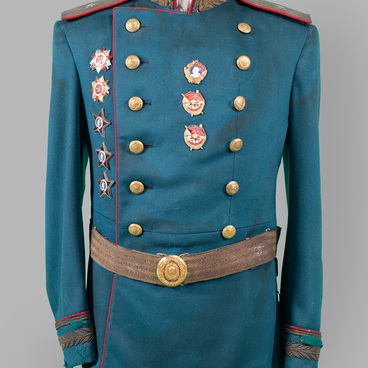The locomotive class L was a Soviet main freight steam locomotive type developed at the end of World War II. The academician Sergey Petrovich Syromyatnikov and the engineer Lev Sergeevich Lebedyansky designed the locomotive that was named Class L after its designer. Both designers were awarded the Stalin Prize.
The emergence of a new type of steam locomotive was influenced by the course of World War II. In 1942, the Soviet troops stopped the advance of the German army, and part of the evacuated factories could resume work. Among them was the Kolomna Diesel Locomotive Plant. However, most of its facilities had been destroyed. Before starting the restoration, it was necessary to decide what the plant would produce. At that moment, a project for a new locomotive was developed.
The steam locomotive Class L was produced from 1945 to 1955. It was one of the best and most popular Soviet steam locomotives, which operated with the Soviet Railways throughout the country. Until 1947, it was called P for “Pobeda” (“Victory”), in honor of the end of the Great Patriotic War. In total, about 4,000 steam locomotives Class L were produced. Many of them are still in operating condition: they carry tourists along sightseeing routes, stand in museums and depots, and often appear in historical films.
The locomotive Class L is a recognizable and characteristic black locomotive with a red edging. On its cap, there was a relief red star and the profiles of Soviet leaders — Vladimir Ilyich Lenin and Joseph Vissarionovich Stalin. After Stalin’s death in 1953, the portraits were dismantled from all locomotives throughout the country. The original bas-relief remained on only two locomotives.
The model of the steam locomotive L-0484 is in the collection of Sergach Museum of Local Lore, Nizhny Novgorod Region. At the beginning of the war, a mechanic at the Sergach depot performed a feat, about which the poet Samuil Marshak wrote “The Ballad of the Worker Sigachev”.
In the summer of 1941, a train with military cargo heading towards Moscow broke down. It was impossible to replace the locomotive in Sergach. The entire back row of the locomotive’s firebox had failed. To fix this problem, it was necessary to take out the firebox and let it cool down. It would have taken at least five hours, but the train would be late. Then the mechanic Ivan Semyonovich Sigachev climbed into the firebox using a wooden board, removed the burning coal and put the heavy red-hot grates in place in forty minutes.
The emergence of a new type of steam locomotive was influenced by the course of World War II. In 1942, the Soviet troops stopped the advance of the German army, and part of the evacuated factories could resume work. Among them was the Kolomna Diesel Locomotive Plant. However, most of its facilities had been destroyed. Before starting the restoration, it was necessary to decide what the plant would produce. At that moment, a project for a new locomotive was developed.
The steam locomotive Class L was produced from 1945 to 1955. It was one of the best and most popular Soviet steam locomotives, which operated with the Soviet Railways throughout the country. Until 1947, it was called P for “Pobeda” (“Victory”), in honor of the end of the Great Patriotic War. In total, about 4,000 steam locomotives Class L were produced. Many of them are still in operating condition: they carry tourists along sightseeing routes, stand in museums and depots, and often appear in historical films.
The locomotive Class L is a recognizable and characteristic black locomotive with a red edging. On its cap, there was a relief red star and the profiles of Soviet leaders — Vladimir Ilyich Lenin and Joseph Vissarionovich Stalin. After Stalin’s death in 1953, the portraits were dismantled from all locomotives throughout the country. The original bas-relief remained on only two locomotives.
The model of the steam locomotive L-0484 is in the collection of Sergach Museum of Local Lore, Nizhny Novgorod Region. At the beginning of the war, a mechanic at the Sergach depot performed a feat, about which the poet Samuil Marshak wrote “The Ballad of the Worker Sigachev”.
In the summer of 1941, a train with military cargo heading towards Moscow broke down. It was impossible to replace the locomotive in Sergach. The entire back row of the locomotive’s firebox had failed. To fix this problem, it was necessary to take out the firebox and let it cool down. It would have taken at least five hours, but the train would be late. Then the mechanic Ivan Semyonovich Sigachev climbed into the firebox using a wooden board, removed the burning coal and put the heavy red-hot grates in place in forty minutes.

